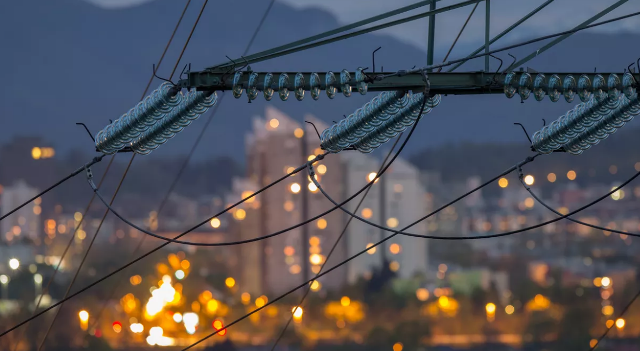Nigeria’s gas reserves have the potential to generate at least 30,000 megawatt of electricity, but the national grid in its current state can only take a small fraction of this power. In this interview, Dayo Adeshina, President of the Nigeria Liquefied Petroleum Gas Association (NLPGA), discusses the potential of LPG to generate much-needed power for Nigerians in an off-grid setting.
Interview:
Dayo Adeshina, President Nigerian LPG Association: LPG can be turned into power in two ways. Firstly, it can be used in power generators from 1 kVA all the way up to 1,500 kVA. Secondly, it could be used for turbines to generate from 10 MW up to 40 MW, with a potential for scaling up. For instance, Ghana is starting to use turbine power running on LPG.
The turbines can be off-grid and on-grid. In an off-grid setting, the off takers are a captive market – often in form of factories or smaller industrial clusters. But when the captive market does not buy all the power being produced, you can sell the excess power to the DisCo. For example, if you have 100 MW of installed capacity within your facility and during off-peak periods you use only 50 MW, you can then sell the balance to the grid.
Nigeria’s Energy Future, NEF: Could you give an example of an LPG-powered off-grid solution?
Adeshina: In the Lekki Free Trade Zone, for example, there is a 12MW installation that is off-grid and running on LPG. It has three 3.5 MW turbines and one 1.7 MW generator. They all run on LPG. There is an on-site storage which is the beauty of LPG – compared to CNG (i.e. compressed natural gas). With LPG equipment, you have storage tanks that are either above ground or below ground. So, what you gain is that you are filling those tanks by trucks making repeated journeys; or if you are close to a terminal, you could pipe your supply from there. For fuels such as CNG, you’d have to have truck-mounted tubes. When the truck comes, it drops the truck-mounted CNG tubes, and then goes away. When the truck comes back, it replaces the one that’s been dropped and used. So, LPG really has the advantage of on-site storage.
NEF: If it is that easy, why don’t we have more LPG-to-power in the country?
Adeshina: Well, the problem is that most Nigerians are always sceptical, even when they can see proven technology. For example, in Lagos now, there are lots of street lights being powered by LPG, but that’s not known to people because it isn’t publicised as much. A number of people think the street lights are powered by the grid. They are not.
The 3 main obstacles to the expansion of off-grid gas installations are financing, awareness, and I’d say the ability to get paperwork sorted out with the regulatory agencies.
NEF: What about the financing challenges? Is it profitable for companies to offer off-grid LPG solutions?
Adeshina: As a commercial solution, yes, it is profitable, given that charges will reflect real cost and will thus lie above rates for conventional power generation. However, the cost of infrastructure is a key challenge. For a typical power station, you are going to have the turbines and gas pipelines that feed into this turbine. However, for LPG-powered power plants, an on-site storage would be needed. And this comes at a cost outside of the main generation equipment. Take a 1 MW diesel generator for example, it would probably cost you anywhere between 30 to 35 million naira. If you do the same 1 MW in gas generators, you would be looking at a significantly higher cost which could be anywhere from between 70 to 100 million naira for that generator. So, the finance challenge is really about the capital cost of infrastructure: the storage and the generator.
Now, thankfully, there is seemingly an interest by one of the main engine manufacturers, who has identified that there is a market for LPG power generation, and that they need to do something about the capital cost structure. They are considering some sort of financial mechanism by which the initial cost can be offset, that is, spread over a period of time. We are hoping that they can get it right. If they do, we are going to see a lot more in terms of LPG-fired generators in the 1 MW and above range and even for turbines.
NEF: If we accept that industrial customers are ready to pay higher tariffs if they can get reliable power, what about other consumers, for example residential estates in cities, is off-grid LPG an option for them?
Adeshina: Yes, it’s an extremely good option, and it’s an area that I have targeted for the last two years. However, the problem has always been the cost structure, which I just outlined to you. At the end of the day, a per kilowatt hour cost structure is what we have to fall back on for such estates. The OPEX on the LPG is cheaper, but the initial CAPEX is extremely high.
NEF: After how many years are you breaking even, if you compare the LPG to a diesel installation?
Adeshina: With LPG you are breaking even in about 2.5 years. From the disparity in price between diesel and LPG, you are making about 40% savings, because LPG is already a deregulated product. That’s why we as the LPG Association are calling for a different financing structure, which will allow customers to overcome the initial hurdle of capital investment. In the mid- to long run, the LPG power is cheaper.
We need the financing agencies to step in here with practical solutions. When the price of diesel went up to 180 naira per liter in June, it had everybody running helter skelter, and scrambling for cheaper solutions. We now need the commercial banks to provide access to cheaper funding. If there are government interventions like a CBN intervention, it would be helpful.
NEF: One immediate option might be to put the burden of the initial capital cost on foreign companies providing the kit?
Adeshina: Very well, but unfortunately, Nigerian banks ask you to cash back the 15% guarantee required from the Nigerian bank in such international arrangements. Cash back here means, they are telling you to put down 100% of that 15% as deposit in the bank, and then they’ll give you the guarantee. This puts the Nigerian company back to ‘square one’, because you don’t get the guarantee and it becomes more expensive.
And that’s where the problem lies for most LPG-to-power projects – finance.
Interviewer:
Christine K.
Director, HBS Nigeria
 Mr. Adeshina is the Managing Director of Strategic Energy Limited of Nigeria and presently, the President of the Nigerian Liquefied Petroleum Gas Association (NLPGA).
Mr. Adeshina is the Managing Director of Strategic Energy Limited of Nigeria and presently, the President of the Nigerian Liquefied Petroleum Gas Association (NLPGA).
He is currently serving as a director in Hydrocorp Nig Limited, Contact Solutions Nigeria Limited, Gaztrade Limited, Gaz logistics Limited, and Gas Terminalling. He is also the Chairman of Caproco International, an oil & gas engineering firm.




